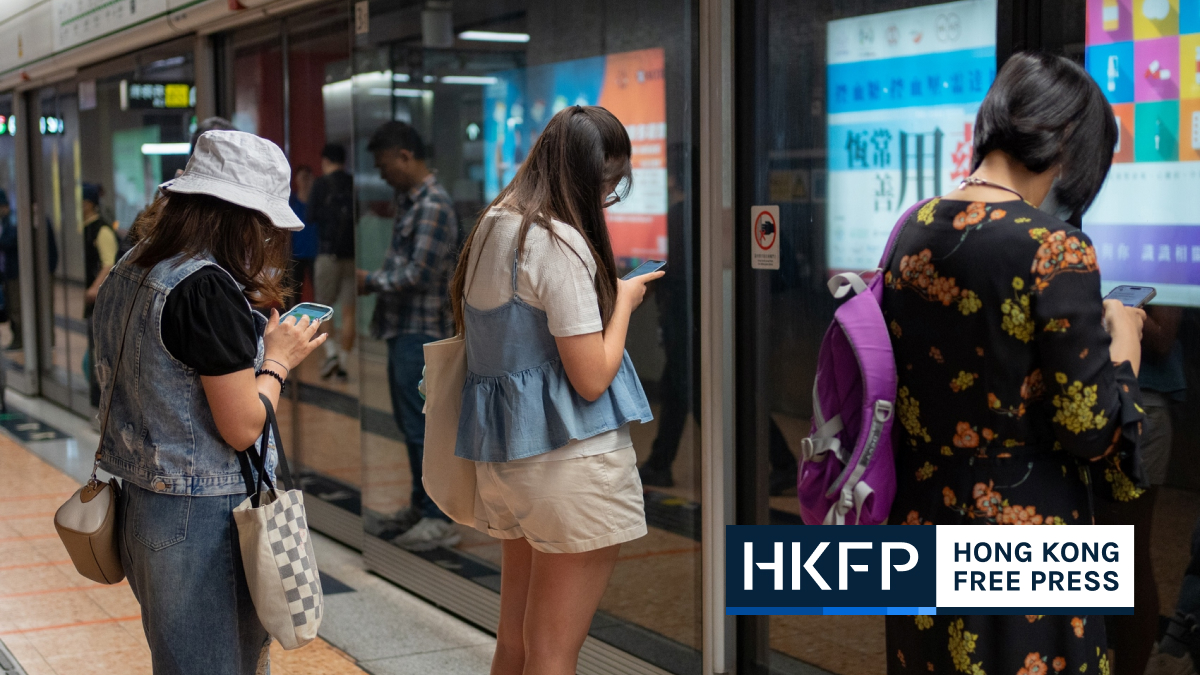“Once upon a time, Hong Kong was a small fishing village.”
Most Hongkongers could make this statement about their city’s origins, but very few could elaborate on what life was really like for the sea dwellers, or Tanka people, who were among the first inhabitants.
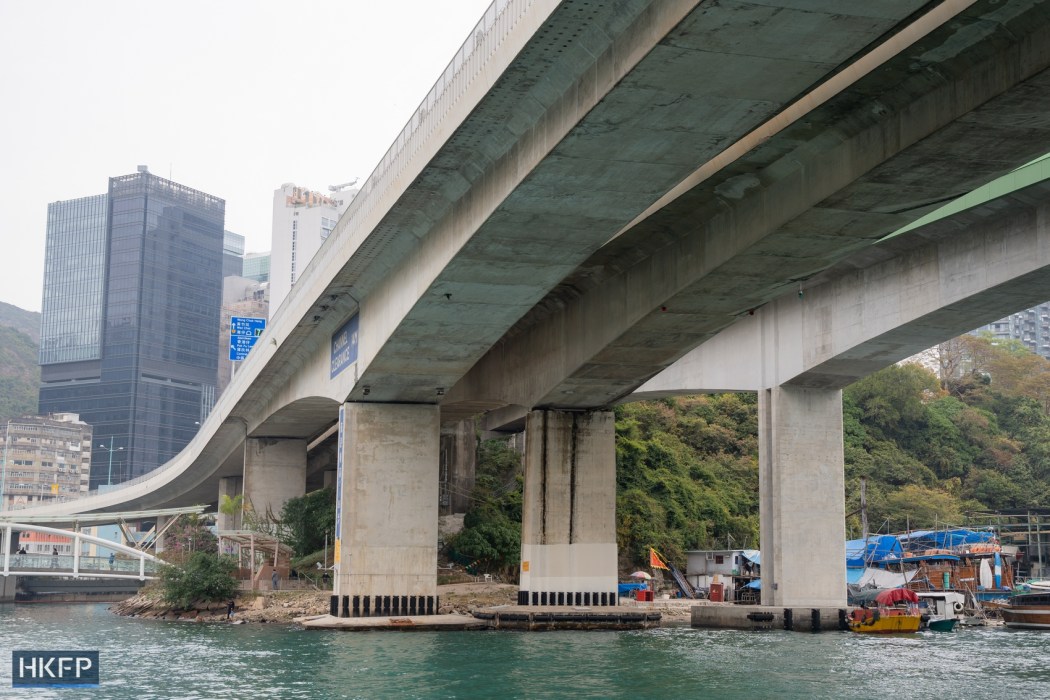
On a gloomy winter day, HKFP was taken on a trip round the Aberdeen Typhoon Shelters on a sampan – a small flat-bottom wooden boat that for decades served as the home and the main means of transport for sea dwellers.
When navigating near the shore of Ap Lei Chau, a small island south of Aberdeen, helmsman Uncle Shun broke his silence. “There’s history to be told about this place!”

The descendant of sea dwellers keeps fit at age 53 thanks to a life spent working on the water.
Uncle Shun spent his early childhood living on a “houseboat” – sampans that stay in harbour and double as homes – like the many fishing families who formed a floating village in Aberdeen in the mid-1900s.
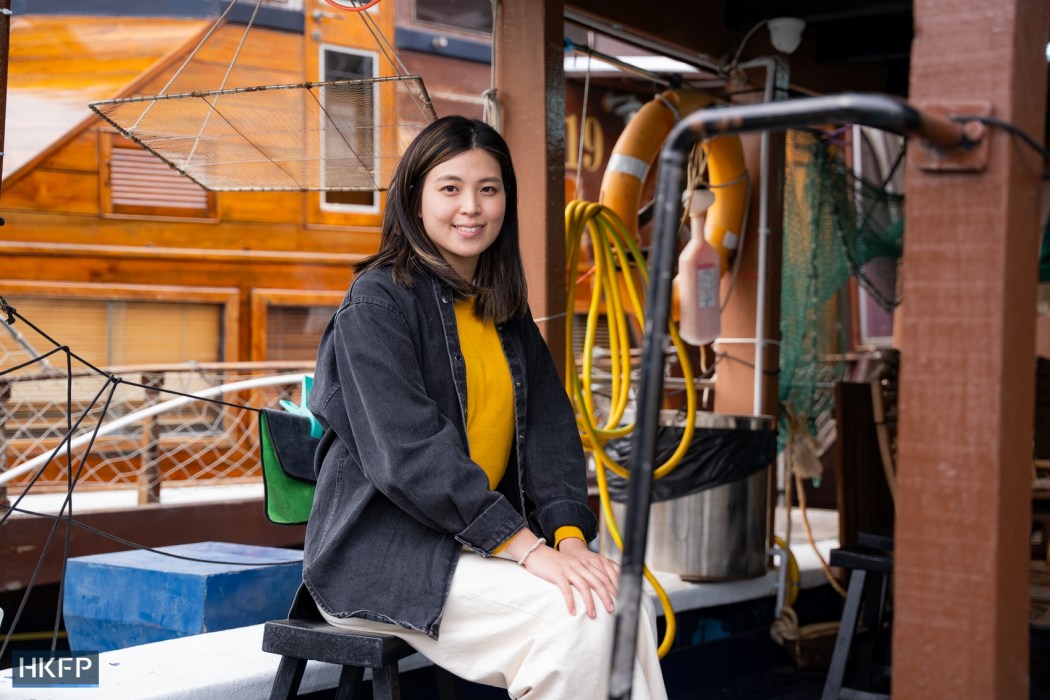
During primary school years, he and his friends would take styrofoam boxes from the pier opposite the Jumbo Floating Restaurant and row them as little boats.
But life in a wooden houseboat was never easy, with residents enduring poor hygiene and occasional fire hazards that threatened their lives and property.

Starting in the 1960s, the government started relocating Aberdeen’s sea dwellers to nearby public housing estates. In 1973, it was Uncle Shun’s turn to start living on shore with his family.
But his life was still tied to the sea. After graduating from primary school in 1983, he started working with his father and two elder brothers to catch shrimps and fish. “I don’t like studying anyway,” he said.

Today, the once densely populated floating village is nowhere to be seen, and the sunken kitchen barge is the only surviving remnant of the world-famous floating restaurant, which capsized last year as it was being towed to Cambodia.
Uncle Shun said there is now only one sampan left that sells “boat noodles” – a staple meal for fishermen in Aberdeen, including himself. “Those sold on the street have a milky flavour that I can’t get used to,” he said.
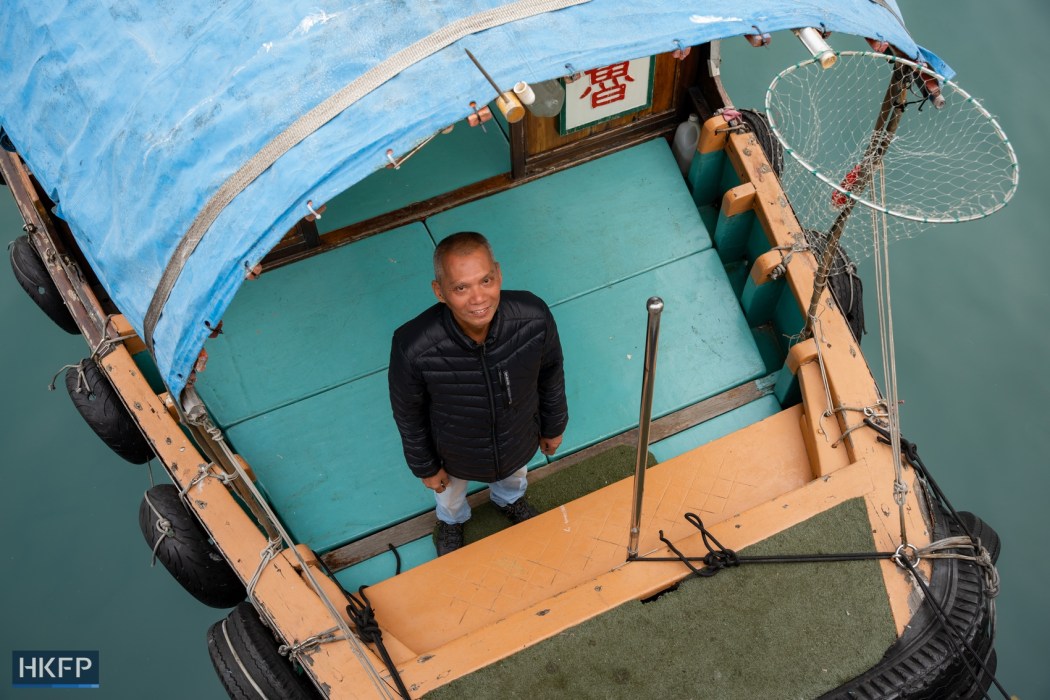
Three and a half years ago, Uncle Shun’s family sold their fishing boat after keeping it for 30 years.
“There’s no way for us to work as fishermen nowadays,” he said. “It’s not about whether it’s a pity. Times have changed.”
‘Revitalising’ Aberdeen’s tourism
Now, Uncle Shun works as a helmsman for sampan tour company Aberdeen 1773 – a project which Jenny Yuen and her husband launched in 2019 with the aim of revitalising tourism in the once-busy harbour.
Yuen’s husband is part of a sea dweller family and has lived in Aberdeen his entire life. Jenny Yuen said he had vivid memories of when the harbour was a magnet for tourists in the 1980s.

But over the years, Aberdeen seems to have lost its magic for visitors. Sampan tours have become less frequent, and the area’s biggest attraction – the Jumbo Kingdom floating restaurants – shut down in 2020 before being towed away.
While some do not want to keep their sampans anymore, the couple, who are both in their early 30s, decided to take them over.
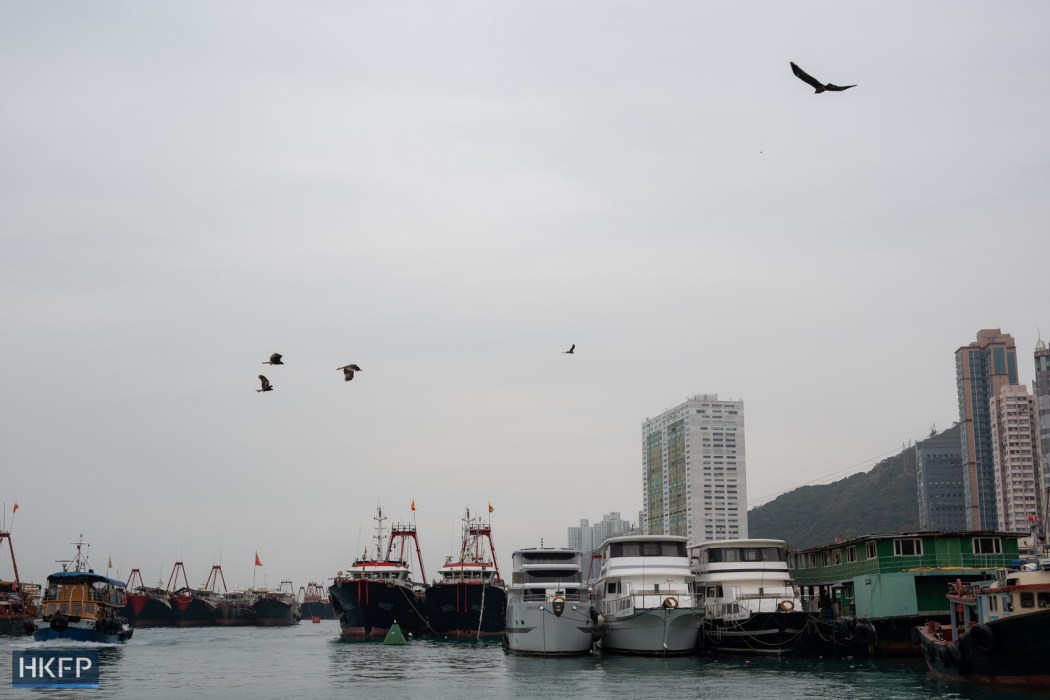
“A thing only becomes garbage when you throw it into a bin. Before that, it never was rubbish,” said Jenny Yuen, adding that they want to help people appreciate the value of sampans.
Today, the couple’s company has a fleet of five sampans, a houseboat repurposed as a mini-museum about sea dwellers, and a dock at the fish market for selling packs of seafood, souvenirs and local goods.

The tour offers an audio-guided trip round Aberdeen Harbour on a sampan navigated by seasoned former sea dwellers like Uncle Shun. Yuen said visitors would get a deeper impression of Aberdeen’s past by hearing its stories aboard an actual sampan or houseboat.
Growing interest
Months after the couple launched their business, Hong Kong’s tourism became crippled by the Covid-19 pandemic and the city’s strict anti-epidemic measures.
Yuen had to switch from a tourist market to attracting locals. She discovered that Hongkongers’ interest in sea dwellers’ stories exceeded her expectations.

In the past, people living elsewhere often looked down on sea dwellers, Yuen’s husband told her.
But now, Jenny Yuen said, Hongkongers have become keener to learn about the history of their city. Patrons who came for sampan tours would often ask question after question of Uncle Shun and other helmsmen about how their lives used to be.
“I am always happy to answer. I will not just casually reply one or two sentences, I will tell them [my story] with all my heart,” Uncle Shun said.
Support HKFP | Policies & Ethics | Error/typo? | Contact Us | Newsletter | Transparency & Annual Report | Apps
Help safeguard press freedom & keep HKFP free for all readers by supporting our team

LATEST FROM HKFP
HKFP has an impartial stance, transparent funding, and balanced coverage guided by an Ethics Code and Corrections Policy.
Support press freedom & help us surpass 1,000 monthly Patrons: 100% independent, governed by an ethics code & not-for-profit.






